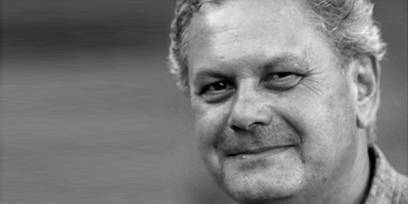The celebration of the International Day of Light gives us a great opportunity to create awareness about the importance of the culture of light, from the Association of Authors of Illumination -AAI-. and the Professional Association of Lighting Designers -APDI-.We have invited leading creators from the fields of art, design, theatre, photography and architecture to share their views and opinions on this important initiative and on the role that light plays in their lives and professions.
Vinicio Cheli gives his opinion on the International Day of Light.
- UNESCO has proclaimed 16 May as International Day of Light. What is your opinion of this initiative?
I think that the initiative of this festival of light is something important, because it is a way of making many people understand that without light, whether for the theatre or for architecture, it would not be possible to understand or appreciate what we see when night falls.
I think that the initiative of this festival of light is an important thing, because it is a way to get to know many people, that without the light created both for the theater and for the architecture, it would not be possible to appreciate and understand what we see when the night arrives.
- How important is it to improve public understanding of the central role that light plays in our daily lives?
The property of light in the world is to make things evident that would otherwise go unnoticed.
The property of light in the normal world is that which highlights things that otherwise would pass unobserved.
- What properties of light do you value most on a personal level?
The lights that we create, whether for the theatre or for architecture, are also the light of the interior, made above all to create atmospheres, which exalt both what we see and what we feel.
The light that we create both for the theatre and for the architecture, and even the light of an interior, is made above all to create atmospheres that exalt both what we see and what we feel.
- And on an artistic level? What role does light play in your work?
In the world of theatre, Leonardo himself made experiments to paint light.
When the dome of St. Peter’s in Rome was built, external ways were created on the outside to fix oil lamps that when lit would create the pattern of the dome itself, isn’t all this great?
This is why since the days of candles there has been an unknown world that has tried to study how to make important things that normally would not have caught people’s attention. The first of all, Caravaggio.
In the world of theatre Leonardo himself had done experiments to color the light.
When the cup of S. Pietro was built in Rome, we have created external corridors in order to be able to get the oil lamps that, when they are accessible, they recreate the design of the cup itself, isn’t all this great?
It is for this reason that since the time of the candles there has been a nascent world that has studied how to make important things that normally would not have created the attention of the people. Primo fra tutti, Caravaggio.
- From your experience would you say that light is an art or a science?
There has always been a parallel world between science and art, because research and science have never been an end in themselves, but an end either for man or for art.
This has also served in our work and we have been, perhaps without being aware of it, an impetus for research, with our requests to express our ideas or our dreams.
There has always been a parallel world between science, research and art, because research and science have never been ends in themselves but always with a purpose either for man or for art.
This has been valid also in our work we have been, perhaps not consciously, a little searching, with our requests to express our ideas or our dreams.
Vinicio Cheli is a graduate of the Academy of Fine Arts in Florence. From 1976 to 1979 he worked for the Maggio Musicale Fiorentino, from then until 1989 for the Piccolo Teatro in Milan, where he collaborated with Giorgio Strehler, and from 1987 to 1991 for the Rossini Festival in Pesaro. He has also been in charge of the illumination of La clemenza di Tito with Brenner, Idomeneo with Lehnhoff, From the House of the Dead and Tristan und Isolde with Gruber, Guglielmo Tell and Castor et Pollux with Pizzi, Fidelio with Strehler and with Herzog, La forza del destino with H. de Ana, Arminda by Gluck, Falstaff (with Ronconi), Otello by Rossini, Norma, Semiramide, Aida, Manon, Così fan tutte, Falstaff, Madama Butterfly, Tosca, Swan Lake, La bayadère (choreography by Nureyev), Carmen, Lucia di Lammermoor, Die Walküre, Pelléas et Mélisande (with Dorn), Turandot at the reinauguration of the Liceu in Barcelona (with Espert), on stages such as Paris (Théâtre de Châtelet and Opéra de la Bastille), Aix-en-Provance, Madrid (Teatro Real and Teatro de la Zarzuela), Salzburg, Brussels, Verona, Toulouse, Milan (La Scala), etc., with important conductors such as Muti and Abbado.
© 2018 javierdelreal.com





